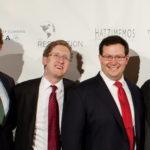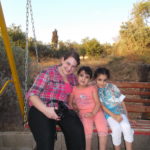1) What is The Resolution Project?
Resolution is a unique pathway to action for aspiring young leaders committed to changing the world. Resolution identifies and empowers undergraduate students around the world who are launching new social ventures, supported by Resolution’s global network of resources. Resolution finds young social entrepreneurs through Social Venture Challenges held at existing youth conferences like the Clinton Global Initiative University, the Youth Assembly at the United Nations, and others. Resolution helps the winners of its competitions to make a positive impact today through Resolution Fellowships. Resolution Fellows receive dynamic, hands-on support, mentorship, and grants to implement their ventures and to develop as socially-responsible leaders. Well about 170 Resolution Fellows in 44 countries on all 6 inhabited continents (including all across the United States) are working in diverse, high-impact fields such as water, food, sustainable development, education, energy and the environment, equality and empowerment, health and wellness, and humanitarian relief. Resolution is building a generation of leaders with a lifelong commitment to social responsibility.
2) How did Resolution start?
The founders of The Resolution Project first worked together on a youth leadership summit in college. Organizing this conference taught my co-founders and me the value of an inspiring gathering of undergraduates committed to making the world better together. The conference experience resounded with educational opportunities, simulation, lifetime friendships, networking, and training for the future. In fact, a ubiquitous feature of this and every conference we attended in college was at least one important VIP speaker, exhorting the assembled students to be “leaders of the future.” We heard that conference keynote speaker recite the familiar speech time and again: “It is such an exciting opportunity for me to address the next generation of leaders. You will all experience something at this conference that will prepare you for a future of changing the world. Learn well here and meet people who you will run into for the rest of your lives as you become influential leaders of your time.” The implicit message here – the subtext, perhaps – was “not now…not yet.” Leaders of the future, to be sure, but not of today. And so the conference would end, with all the wistfulness of leaving new friends, going back to school, and just perhaps leaving something on the table that had yet to be done. Over time – after graduating and learning about social enterprise, entrepreneurship, micro-grants, etc. – we recognized that there was a place for an organization to galvanize young leaders of today in the social sector. Resolution was inspired by the dream to create a catalyst – seed funding, mentorship, and a curated ecosystem of support – that would help students at the undergraduate level with a brand new socially-responsible idea learn through taking action today.
3) Can you share with us a few Resolution Fellow stories?
Of course! All of our Fellows are wonderful, but you might be particularly interested in Resolution Fellow Melissa Diamond (http://www.resolutionproject.org/fellows/melissa-diamondhttp://www.resolutionproject.org/fellows/melissa-diamond), a University of Richmond student who is helping families of and children with autism in Jenin, Palestinian Territory. Melissa and her team with A Global Voice for Autism (http://www.resolutionproject.org/ventures/global-voice-autism) successfully trained 14 mothers to deliver Applied Behavioral Analysis therapy to their children in a cooperative format, making the therapy accessible and affordable. They also had 22 siblings participate in a sibling support program, where they learned skills to teach and play with their brothers and sisters. In addition, the team trained over 250 community members in autism basics, and now 8 community volunteer translators serve as advocates for individuals with autism. These programs are helping to remove some of the stigma currently suffered by children with autism and their families in the region. Melissa and her team are working towards a project that would involve three autism cooperatives in Jordan (Syrians, Palestinians, and Jordanians), to study the efficacy of the cooperative model cross-culturally.
Lamia Bazir (http://www.resolutionproject.org/fellow/lamia-bazir) is another Fellow you might find exciting. Lamia, an alumna of Al Akhawayn University and Columbia University, is building a women-run hamam and creating other opportunities for women in Adghagh, Morocco through her Venture, Empowering Women in the Atlas (http://www.resolutionproject.org/venture/empowering-women-atlas). Lamia’s Venture has several components. In addition to building a hammam (bathhouse) to provide employment for women, her social Venture promotes cooperation between the Adghagh women’s association and the Hilary Clinton Center for Women’s Empowerment at Al Akhawayn University, so that local women benefit from the center’s trainings and programs. She is also working to bring university students to the village to deliver literacy and skill-building lessons to women there. Lamia is integrating « HE FOR SHE » as a key principle of EWA, engaging men in the village, university, and EWA team in the women’s empowerment process.
4) What are Resolution’s goals?
Resolution will continue to grow by increasing the number of Fellowships we award, engaging our Fellows with increasingly deep support, growing our volunteer team commensurately, and expanding our network of Pathway Partners with public and private sector institutions to support our Fellows. Each Fellowship has a positive impact on the Fellow and on thousands of beneficiaries of that Fellow’s social venture, as well as the volunteers and organizations engaged in supporting that Fellow. We will continue to improve our Fellowship value proposition and to coalesce the social sector around an intentional, collaborative, and efficient model of supporting leaders and their organizations. We fundamentally believe that each Resolution Fellow will be a future leader in philanthropy, business, and government. The Resolution Fellowship will have a deep impact on the character of that leadership, infusing it with socially-responsible values and a proven, entrepreneurial ability to implement good ideas. In this way, Resolution is making a reality of its vision: a generation of leaders with a lifelong commitment to social responsibility.
5) Can the international community be helpful in any way for achieving these goals?
Actually, in the area of growing new, viable social ventures created by inspiring young leaders, collaboration from the international community – public, private, and social sectors included – is critical. This cross-sector, cross-border collaboration and community is a key area of The Resolution Project’s innovative approach – something we call the Pathway to Action. Since late 2013, we have been forming official partnerships of various types, including joining the associated NGO program of the United Nations and preparing a Clinton Global Initiative Commitment. We are also forming Pathway Partnerships with such wonderful social sector organizations as Echoing Green, the Unreasonable Institute, the Harvard Center for Public Interest Careers, and others. We have also formed tremendous corporate program partnerships with DuPont, GE, and GLG Social Impact, among others. This network of organizations is not just a cloud of support for Resolution Fellows, but is clearly organized into steps in the ladder of growth, personally and professionally, for a Resolution Fellow. The key is that we are now working to develop an informative, active dialogue – leading to effective collaboration – between these public and private institutions, which are working together to apply resources, skills, and attention to efficiently support young leaders growing impactful organizations. We welcome the participation of public, private, and social sector institutions from around the world in the Pathway to Action supporting Resolution Fellows – with Fellows in 45 countries on all six inhabited continents, virtually any organization can potentially be a viable partner.
L.V.









